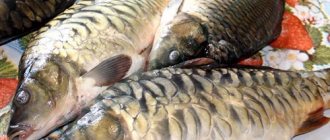Beneficial features
Chicken eggs are a popular product. Many different dishes are prepared from it. Its popularity is due not only to its bright taste, but also to its beneficial properties, which include:
- high amino acid content;
- presence of vitamins and microelements;
- easy digestibility;
- high content of protein and healthy fats.
Regular consumption of quail eggs already for 2-3 weeks gives positive results:
- improves the performance of the pancreas;
- reduces the intensity of the manifestation of unpleasant symptoms of pancreatitis - vomiting and nausea;
- has a positive effect on the immune system.
Benefit
Why should eggs still be in the human diet? Diseases of the digestive system ultimately lead to impaired absorption of substances necessary for the full functioning of human organs. He needs animal proteins and egg proteins are almost completely (95%) digestible. The benefit of the yolk lies in its composition, rich in minerals (potassium, calcium, sulfur, phosphorus, iron, magnesium) and vitamins (A, D, E, B1, B2, B5, B6, B9, B12, H, KK, choline, PP). . Eggs have a positive effect on brain activity, help strengthen the skeletal system, and recent studies prove that they are also beneficial for the cardiovascular system.
Boiled eggs
The boiled product is strictly prohibited in acute forms of the disease. You can only eat proteins in limited quantities.
Dishes with the ingredient in question are introduced into the diet only from 30 days after the signs of the disease disappear.
In case of exacerbation of the chronic form of the pathology, you can eat boiled quail eggs, but no more than 5 eggs per week. After the symptomatic picture of the pathology subsides, the amount of product eaten is increased to 10 pieces per week.
Recommended methods of preparing the product are baking and steaming. The ingredient can be used in other dishes:
- casseroles;
- souffle;
- soups;
- cutlets
If there is inflammation of the gastrointestinal tract, avoid eating eggs that have been boiled for a long time.
When cooked for a long time, the yolk becomes too dense and is therefore poorly absorbed by the body. This causes belching or heartburn. Also exclude snacks from the ingredient in question: salads with mayonnaise, spicy and fatty dishes with the addition of eggs.
Prohibited foods in the diet
All people diagnosed with pancreatitis must remember that eating fatty foods containing coarse fiber is completely contraindicated. Fatty meat (goose, pork, etc.) and offal (liver, brains, kidneys, etc.) are prohibited. It is necessary to give up various canned foods, sausages and lard.
Fatty fish also provoke an exacerbation of the disease, these include mackerel, eel, herring and sprat. Salted and smoked fish and caviar are especially difficult for the pancreas.
If you have pancreatitis, it is strictly forbidden to eat cheese, even processed cheese, and condensed milk. You should also avoid legumes, namely peas, corn, lentils and beans. Among other things, it is necessary to completely exclude mushrooms prepared in any way from the diet. This is due to the fact that their structure contains a large amount of coarse fiber. If the patient cannot exclude bread from the daily diet, then he should eat only the white variety made from premium flour. At the same time, all baked goods should be slightly dried, this will help facilitate not only the digestion process, but also speed up their absorption by the intestines. Before eating crackers, they must be softened so as not to cause mechanical damage to the stomach and esophagus. During the period of remission, rye bread varieties, which contain bran or whole grains, are very well absorbed by the body.
In case of inflammation of the pancreas, vegetables should be consumed only in pureed form. You can make a puree soup from them, which includes cauliflower, zucchini, beets or potatoes. It is strictly forbidden to eat radish, sorrel, radishes, garlic, onions, peppers or horseradish, otherwise the patient may experience an exacerbation of the disease.
Among fruits, preference should be given to apples, pears, melons or pineapples. All sour fruits should be excluded from the diet: lemon, grapefruit, tangerine, pomegranate, kiwi, etc. All types of currants, cranberries and gooseberries are prohibited. To relieve the pancreas as much as possible, you need to reduce your intake of sweets. This rule must be strictly observed, especially in the first month of treatment.
There are some products that are almost impossible to live without. If they are missing, the dishes lose their taste. But not everyone knows, and perhaps does not want to know, whether they are suitable for them or not. After all, health sometimes fails. Now we will talk about eating eggs for pancreatitis. But first let's talk about...
Raw eggs for pancreatitis
The essence of diet therapy for pancreatitis is limiting fat in the diet. The fact is that pathology disrupts the production of enzymes responsible for the breakdown of these substances.
For this reason, the product can only be consumed in limited quantities.
Raw chicken eggs are especially dangerous for this disease. They can provoke the development of an intestinal infection.
Quail eggs are also good to eat raw. This is done not for the purpose of saturating the body, but for its healing. You can prepare the following dish for pancreatitis: mix 2-3 eggs with 1 teaspoon of sugar. The product is eaten raw 30 minutes before meals for 30 days, and then take a break for several months. The dish is washed down with weakly brewed tea, compote or jelly.
In what form is it allowed to be consumed?
Chicken eggs contain a lot of fat, which puts stress on the liver. The yolk has a pronounced choleretic property. And protein is known as a fairly strong allergen.
That is why nutritionists strongly discourage eating chicken products during acute stages of pancreatitis.
On the fourth or fifth day after the attack, you are allowed to eat chicken omelette. After that, dishes containing protein (casseroles, soufflés, puddings) are introduced into the patient’s diet.
Omelette for illness
The basic rule when preparing an omelet is to avoid adding milk and yolks. Patients with an inflamed pancreas should consult a doctor about the possibility of using the product in question. Despite their beneficial characteristics, eggs can negatively affect the functioning of the gastrointestinal tract.
The preferred method of preparing an omelet is steaming.
There should be no crusts or fried parts in such a dish. It is important that the omelette is fluffy and has a soft consistency. Prepare the dish according to the following recipe: pour 2 chicken eggs into ½ cup of water and add a little salt to the mixture. For an omelet, take only whites and pour water into them, add herbs to taste. The well-beaten mass is poured into the mold and cooked in a water bath for about 20 minutes.
You can also add lean meats or hard cheeses to the omelet. This food is washed down with herbal decoction, still water or weak tea.
Authorized products
If a sick person quite often has attacks of exacerbation of pancreatitis, then first of all he should eat lean boiled meat. It is preferable if it is cut in a meat grinder and steamed in the form of meatballs or meatballs. A variety of pates are also well accepted by the digestive system. It is recommended to use chicken, turkey, rabbit or veal as dietary meat. Before cooking, the meat should be separated from the skin and tendons.
The choice of fish must also be taken carefully. Among its representatives, preference can be given to carp, cod, pike perch, pollock, navaga and flounder. But it is advisable to abstain from pink salmon and carp. Among the seafood you can use shrimp, crabs or mussels.
The best digestible dairy products are low-fat cottage cheese, fermented baked milk, yogurt or yogurt. Whole milk should only be used for making porridge. In this case, you can use cow's or goat's milk.
However, only the following types of porridge are allowed: oatmeal, rice, buckwheat, millet or semolina. From time to time they can be replaced with bran, but only during the period of remission. It is also necessary to indicate permitted drinks, among which preference should be given to weak black or green tea diluted with milk. You can drink berry and fruit jelly. It is best to avoid carbonated citrus lemonades.
Possible harm
In addition to the beneficial properties, it is necessary to note the harmful characteristics of this product, especially when it comes to its use for pancreatitis:
- Eggs contain a large amount of fat, about 7 grams. Fat, in addition to beneficial amino acids, contains cholesterol that is dangerous for the patient’s body.
- The yolks of the product have a choleretic effect.
- Protein causes severe allergic reactions. Allergy symptoms manifest themselves in different ways - from skin rashes to disruption of the functioning of the gastrointestinal tract.
- Products often contain pathogens of dangerous diseases, such as salmonellosis. To avoid this problem, you need to purchase eggs in the store. Before purchasing, pay attention to the product labeling.
Pros and cons of eating eggs for pancreatic pathologies
The main advantage of chicken eggs is their high level of protein concentration, which is quite easily digestible and digestible by the human digestive system. This protein is one of the most necessary components that ensure a full level of restoration of the affected areas of pancreatic tissue and contribute to the normalization of its functioning in the synthesis of insulin and enzyme compounds.
Moreover, chicken eggs for pancreatitis are a very useful source of vitamins and minerals, which, when introduced into the human body, have the following positive effects:
- help restore strength;
- have a stimulating effect on the body’s overall immune defense system;
- strengthens the bone tissue system of the human skeleton, as well as teeth, hair and skin structure;
- have a preventive effect against a decrease in hemoglobin levels and the development of pathologies such as anemia.
But, despite such a huge number of positive properties, this food product also has a negative side, which limits their use in the development of pancreatic lesions of the pancreas.
Therefore, the question of whether it is possible to eat eggs with pancreatitis is controversial and requires an individual approach.
The danger of using this product during the development of an inflammatory process in a parenchymal organ lies in the following aspects:
- Raw eggs for pancreatitis contain a fairly large concentration of fats, up to seven grams in one product, and half of these fats appear as harmful cholesterol compounds. Fat during inflammation of the pancreas (development of an acute form of pancreatitis), especially during an exacerbation, is practically not digested and contributes to the occurrence of painful sensations in the abdominal area, the development of diarrhea and the appearance of heartburn. Boiled eggs for pancreatitis, especially hard-boiled ones, can contribute to the formation of the same symptoms. Therefore, even if the doctor allows the use of this product, then drinking them or eating hard-boiled ones must strictly adhere to the recommended dose.
- The yolk has a choleretic effect of an intense spectrum of action, which should be avoided in case of chronic pancreatitis, as well as in case of exacerbation of acute pancreatitis.
- But the protein in this product is one of the strongest allergens. Therefore, in people prone to allergic reactions, eggs with pancreatic disease can provoke the manifestation of unpleasant symptoms, even from the gastrointestinal tract system.
- These food ingredients may contain pathological microorganisms that are causative agents of various infectious processes. In most cases, eating a low-quality egg can trigger the development of salmonellosis. The development of an intestinal infection, occurring together with pancreatic pathology in the pancreas, can become the root cause of a deterioration in general health and provoke another exacerbation of the pathology. Eggs for pancreatitis can only be bought in stores with a good reputation. Each of which must be marked. Before cooking, this product must be thoroughly washed using hygiene products (soap, dish soap, shampoo, whatever is on hand).
In the event that a poor-quality product is eaten and discomfort and discomfort begin to appear in the abdominal area, it is necessary to urgently contact a qualified specialist.
Omelet in the patient's diet
Omelette - what a wide variety of products there are, they come with lard, tomatoes, sausage, etc. In our case, all these types are prohibited for developed pancreatitis. Therefore, to answer all questions about whether it is possible to eat an egg omelet with pancreatitis, it is possible only if it is steamed and if certain conditions are met:
- It is prohibited to eat omelet during exacerbation of pancreatitis.
- Introduce egg products into the diet with caution, since the allergens contained in eggs can cause harm to the patient.
- This dish must be prepared exclusively without the yolk. Such use will enable rapid welding and will bring good results for the treatment of the disease.
In some cases, the use of yolk is allowed, but this is only when there is an urgent need for it and the norm is 1⁄2 of its volume. The ban is caused by a large amount of cholesterol, which leads to the formation of plaques in human blood vessels.
steam omelette for pancreatitis
At the time of preparation, the product must be completely ready, since raw chicken eggs contain a dangerous enemy for the body - infection. During preparation, milk is added in small quantities; it can be diluted with water in a ratio of 50:50.
Quail eggs are also used to prepare omelettes, which significantly facilitate recovery from pancreatitis. Making an omelet is very simple. This requires only 3 ingredients:
- 5 quail eggs;
- 200 ml milk;
- salt on the tip of a knife.
Remove the yolks. All listed ingredients are mixed until foamy. Pour into the dish in which it will be cooked. Take the next container with a larger diameter from the first container and pour water into it, bring to a boil. Next, place a container with the contents of the omelet in it and cover with a lid. The omelette thickens within 10-15 minutes. The dish is ready.











